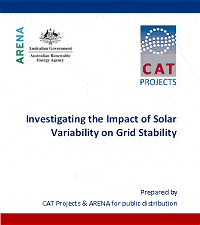In the town of Alice Springs in Australia’s Northern Territory, the advantages of distributed solar over massive solar farms have been demonstrated in a study that will have implications nationally and overseas.
Alice Springs’ network sees a peak demand of approximately 55MW during the summer periods and during winter the demand only reaches 27MW. These figures do not include the effect of installed PV.
At present the nominal capacity of PV on the network is around 4MW. This is comprised of 1.2 MW of residential solar, 1.8 MW of commercial PV and the 1MW Uterne Solar Farm.
So far, the impact of the solar revolution on the network has been manageable; however some restrictions have been put in place after voltage rise issues became a concern at some local substations and feeders.
Residential systems are now capped at 4.5kWp and commercial systems are capped at a capacity that will ensure no export to the local network occurs.
But that doesn’t mean the days of new solar power systems being added that can export to the grid are numbered. Alice Springs can handle more – a lot more; it’s just down to the way it’s implemented.
Yesterday, the Australian Renewable Energy Agency (ARENA) released a study that shows how up to an extra 10MW of solar panels could be added to Alice Springs’s mains grid without adversely affecting supply stability – and without requiring energy storage.
Given Alice Springs’ “island” type isolation and various generation sources (gas, solar, diesel); its unique characteristics make it a viable and useful proxy for larger grids.
“The study shows that building a larger number of smaller installations and spreading them out, ideally 3-5 kilometers apart in Alice Springs, can reduce the impact of local cloud cover and smooth overall solar energy output,” said ARENA CEO Ivor Frischknecht.
“Studies like this have a vital role to play in helping to increase confidence in renewable energy, overcoming barriers and encouraging more renewables into electricity grids.”
The reports shows apparent instability in the demand appearing in a scenario of a single 10MWp array is substantially reduced when the arrays are separated into nine 1.1MWp systems. The report acknowledges further research and economic modelling is required to compare the costs for different sized arrays.
The final report is available here: Investigating the impact of solar variability on grid stability (PDF 2.9MB).












































